#slim ducted mini split
Explore tagged Tumblr posts
Text
48000 Btu Ducted Indoor Unit in Minisplitwarehouse.com
Get 48000 Btu DLFLA Ducted Indoor Unit.
FEATURES: Modes: Cool, Heat, Dry, Fan, Auto 4 Ton: 16.2 SEER/ 8.6 EER/10.8 HSPF/ COP: 47F (3.03), 17F (2.46), 5F (1.8) Multi Poise Installation (Up Flow, Down Flow, Horizontal Right, Horizontal Left) Total system static pressure up to 0.8 in. W.C Less than 2% air leakage Quiet indoor operation Anti-corrosive fin coating Extreme heating operation in as low as -22° F (-30° C) based on outdoor unit pairing Optional Electric Heat Packages available Built-in third-party thermostat compatibility (Single Stage): Not Included.
PRICE: $1,729.99 ex. tax
ducted mini split, "slim" ducted mini split, ducted mini split ac, ducted mini split air conditioner, ducted mini split heat pump, ducted heat pump, ducted ac, ducted air conditioner
midea mini split, midea mini split ac, midea mini split air conditioner, midea mini split heat pump, midea ductless mini split, midea ductless ac, midea ductless air conditioner, midea ductless heat pump
LINK: https://www.minisplitwarehouse.com/category/slim-ducted https://www.minisplitwarehouse.com/category/midea
2 notes
·
View notes
Text
Daikin 24K BTU Fan Coil – Maximum Cooling for High-Demand Applications
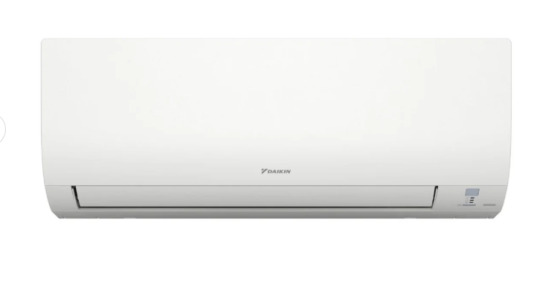
The Daikin 24K BTU Fan Coil is a powerhouse solution for larger rooms and high-demand environments.
Ideal for expansive living areas, large offices, retail spaces, or sunrooms requiring consistent cooling.
Part of the advanced Daikin R-32 MXM Hi-Wall Style Series, this fan coil blends cutting-edge performance with modern styling.
Offers a slim wall-mounted profile that fits seamlessly into residential and commercial interiors.
Powered by the efficient FTXV24AVJU9 Indoor Unit, which provides a robust 24,000 BTUs of cooling performance.
Covers up to 1,500 sq. ft. while maintaining even air distribution and temperature stability.
Designed to work as a Daikin Multi-Zone Compatible Fan Coil, allowing integration into a full-home or multi-room HVAC system.
Provides flexibility to manage comfort independently across various zones.
Installed as a Daikin Hi-Wall Ductless Unit, requiring no ducts and offering a cleaner, more efficient setup.
Great for renovations, new builds, or areas without access to central ducting.
Uses the Energy-Efficient R-32 Refrigerant System, which enhances performance while minimizing environmental impact.
Provides excellent heat exchange and helps reduce energy consumption.
Delivers high-capacity cooling with minimal noise, simple operation, and reliable performance year-round.
Ideal for both residential and light commercial use where strong cooling power is a must.
Whether used as a stand-alone or in a multi-zone configuration, this fan coil delivers powerful results.
Stay cool and energy-smart with the reliability of Daikin mini split systems.
#Daikin R-32 MXM Hi-Wall Style Series#Daikin 24K BTU Fan Coil#FTXV24AVJU9 Indoor Unit#Daikin Multi-Zone Compatible Fan Coil#Energy-Efficient R-32 Refrigerant System#Daikin Hi-Wall Ductless Unit
0 notes
Text
Cooling Coastal LA: HVAC and Mini Splits
HVAC Mastery in Culver City
Culver City, a hub of creativity with its studios and tree-lined streets, thrives on a rhythm that’s both bustling and serene. Yet, when summer rolls in, the heat can stifle that balance, turning cozy bungalows into saunas. That’s where HVAC Culver City shines, offering a full-spectrum approach to heating, ventilation, and air conditioning. These systems are the backbone of year-round comfort, tackling everything from scorching August afternoons to chilly January nights.
Technicians here are wizards of their trade, servicing sprawling central units that weave through attics and crawlspaces. A routine visit might involve flushing a condenser choked with city dust or tweaking a thermostat for peak efficiency. For a homeowner, it’s a lifeline—imagine a film editor unwinding after a long day, the AC humming softly as it banishes the day’s heat. In Culver City, where every square foot counts, HVAC pros ensure systems run lean and mean, keeping energy bills in check while the cool air flows freely.
Mini Splits: Venice’s Space-Saving Cool
Just a stone’s throw away, Venice pulses with a bohemian spirit—canals glimmer, murals pop, and funky cottages line the streets. Space is tight, and traditional HVAC setups often clash with the neighborhood’s quirky layouts. Enter mini split installation Venice, a sleek, ductless alternative that’s rewriting the rules of cooling. These compact systems deliver pinpoint climate control, perfect for Venice’s mix of historic bungalows and modern lofts.
Installation is a craft of precision—technicians mount an indoor unit on a wall, linking it to an outdoor compressor via a slim conduit. No ducts mean no invasive retrofits, preserving a home’s charm while slipping cool air into every corner. A Venice artist might chill their studio without sacrificing ceiling height, or a beachside renter might tame the heat in a single room without overhauling the whole place. It’s flexible, quiet, and energy-smart—qualities that vibe with Venice’s offbeat soul, delivering relief where it’s needed most.
The Coastal Connection: HVAC Meets Mini Splits
While HVAC Culver City and mini split installation Venice cater to distinct vibes, they share a mission: beating LA’s climate with style. Culver City’s central systems excel in larger homes, pumping conditioned air through a network of vents to blanket every room. Venice’s mini splits, meanwhile, thrive in smaller or segmented spaces, offering zoned cooling that cuts waste. Together, they reflect the Westside’s diversity—one a powerhouse, the other a nimble innovator.
Picture a Culver City family hosting a movie night, the HVAC keeping the living room crisp as popcorn pops. Down in Venice, a surfer crashes after a day on the waves, their mini split whispering cool air into a lofted bedroom. Both systems lean into efficiency—HVAC units with smart thermostats, mini splits with inverter tech—slashing power use in a region where sustainability matters. It’s a tag-team effort, proving that comfort doesn’t need to clash with the coastal ethos.
Crafting Cool Havens
The magic happens in the hands of local experts. For HVAC Culver City, technicians know the drill—navigating the city’s mix of old builds and new condos, they tweak systems to shrug off the salty air creeping in from nearby beaches. In Venice, mini split installers flex creativity, threading lines through tight walls or dodging quirky floorplans with ease. Homeowners play their part—catching a unit’s odd groan or a room’s stubborn warmth sparks timely fixes or upgrades.
This collaboration is pure LA—gritty yet smooth. A Culver City repair might save a sweltering weekend, while a Venice install crowns a home refresh. The pros weave through traffic and tight spaces, delivering results that match the neighborhoods’ distinct beats. For residents, it’s a chance to reclaim their slice of the Westside—sip coffee in a chilled den or nap by the canal, all wrapped in effortless cool.
A Breath of Westside Air
On LA’s coastal edge, where Culver City meets Venice, HVAC Culver City andmini split installation Venice aren’t just services—they’re a lifestyle lift. HVAC keeps the heart of Culver pumping with steady, whole-home comfort. Mini splits dot Venice with bursts of cool, honoring its free-spirited quirks. Together, they tame the heat, nod to the green, and let residents live the Westside dream.
For locals, it’s more than mechanics—it’s a stake in their turf. A serviced HVAC humming through a Culver twilight or a mini split purring in a Venice nook becomes a quiet win. In a stretch where the sun reigns and the ocean whispers, these solutions don’t just cool homes—they define them, making every day a breeze in LA’s coastal crown.
0 notes
Text
Customising Air Conditioner Installations for Unique Architectural Designs in Canning Vale
Modern architectural trends often feature unique layouts, unconventional materials, and intricate designs, presenting challenges when installing air conditioning systems. In Canning Vale, where efficient cooling is essential due to the warm climate, tailored solutions are crucial for maintaining comfort while respecting the architectural integrity of these buildings. This article explores innovative methods and strategies for customising air conditioning in Canning Vale to suit properties with distinctive designs.
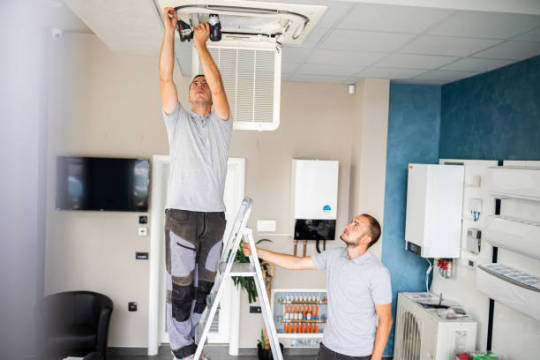
Challenges of Unconventional Architectural Designs
Irregular Room ShapesBuildings with non-standard layouts, such as curved walls, vaulted ceilings, or multi-level open spaces, complicate airflow distribution and temperature control. Conventional systems may fail to provide consistent cooling across these areas.
Use of Non-Traditional MaterialsMaterials such as glass, steel, and concrete, often seen in modern designs, can affect heat retention and cooling efficiency. Large glass facades, for example, may allow significant heat gain, increasing the cooling load.
Limited Installation SpaceCompact or minimalist designs often leave little room for ductwork, compressors, or large indoor units, necessitating innovative approaches to placement.
Preservation of Aesthetic AppealIn homes or commercial buildings where aesthetics are a priority, bulky or visible components of air conditioning systems can detract from the design.
Solutions for Unique Architectural Challenges
Split Systems for Targeted Cooling
Split air conditioning systems are ideal for buildings with irregular layouts or limited installation space. These systems allow for:
Custom Placement: Indoor units can be strategically positioned to provide cooling to specific zones without intrusive ductwork.
Aesthetic Integration: Slim and stylish indoor units blend seamlessly with modern interiors.
For air conditioning in Canning Vale, split systems are particularly suitable for homes or offices with limited wall space or unusual room configurations.
Ductless Mini-Split Systems
Ductless mini-split systems are an excellent option for properties where traditional ductwork is not feasible due to architectural constraints. Benefits include:
Flexible Installation: Units can be mounted on walls, ceilings, or floors to suit the design.
Zoning Capabilities: Each unit can operate independently, allowing for personalised temperature control in different areas.
These systems are a practical choice for multi-level properties or buildings constructed with glass or steel, where heat gain varies across zones.
VRV/VRF Systems for Large or Complex Buildings
Variable Refrigerant Volume (VRV) or Variable Refrigerant Flow (VRF) systems are advanced solutions for large buildings with unique designs. They offer:
Precise Temperature Control: These systems can simultaneously heat and cool different zones, accommodating diverse requirements within the same building.
Minimal Space Requirements: Compact outdoor units and minimal internal components make these systems ideal for properties with limited space.
For commercial properties in Canning Vale with unconventional layouts, VRV/VRF systems ensure efficient and customisable cooling.
Innovative Use of Ductwork
For properties requiring ducted systems, custom ductwork solutions can be implemented to maintain the design aesthetic:
Low-Profile Ducts: Slim ducts can be concealed within ceilings or walls without compromising airflow efficiency.
Zoning and Dampers: Advanced duct systems can include dampers to regulate airflow, ensuring consistent cooling across irregular spaces.
Smart Technology Integration
Smart air conditioning systems enhance the functionality and efficiency of installations in architecturally complex buildings:
Sensors for Adaptive Cooling: Smart sensors detect temperature variations caused by unconventional materials or layouts, adjusting the system automatically.
Remote Control: Smart systems allow users to control and monitor cooling remotely, ensuring comfort without overuse of energy.
For air conditioning in Canning Vale, smart systems are becoming increasingly popular as they align with the region’s emphasis on energy efficiency.
Professional Assessment and Custom Solutions
Partnering with experienced HVAC professionals ensures that the unique aspects of a property are fully considered during the design and installation process. Key considerations include:
Heat Load Calculations: Customised calculations based on room size, materials, and sun exposure.
Energy Efficiency Options: Recommending units with high energy ratings to reduce operational costs.
Conclusion
Installing air conditioning in buildings with unique architectural designs requires a tailored approach to address challenges like irregular layouts, unconventional materials, and aesthetic considerations. Whether opting for split systems, ductless solutions, or smart technologies, property owners in Canning Vale can achieve efficient and visually appealing cooling by working with experienced professionals. For reliable air conditioning in Canning Vale, selecting a customised solution ensures optimal performance and comfort while preserving the integrity of modern architectural design
https://www.gildanairelectrical.com.au/customising-air-conditioner-installations-for-unique-architectural-designs-in-canning-vale/
0 notes
Text
Ductless vs. Ducted: Which is Best for Your Home?
Picking the right air conditioning installation in Newcastle for your home will boost comfort, save power, and even change the look of your rooms. Here at Onsite Air, we know how key it is to choose a unit fit for your needs. One of the top picks for folks now is ductless or ducted aircon. Both have their own perks and uses. Let’s look into it to help you pick well.
What is a Ducted Air Conditioning System?
A ducted air conditioning in Maitland uses a web of ducts set up across the home. The main unit is often out of sight in the roof, basement, or loft. Air moves through the ducts and flows into rooms via vents. This central plan even provides cooling throughout the whole home, keeping the same temperature all over.
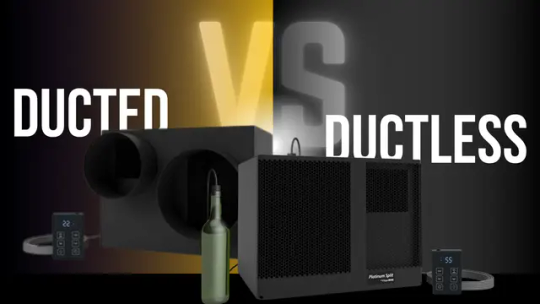
Main points of ducted systems:
One unit serves many rooms
Ducts stay hidden in walls, floors, or roofs
Set by a main control panel
What is a Ductless Air Conditioning System?
Ductless units, also called split or mini-split systems, don’t need ducts. Instead, they have an outdoor unit linked to indoor wall units. These wall units blow cool air right into the room with no need for ducts. Each wall unit works on its own, so you can set the temp of each room through air conditioning installation in Newcastle.
Main points of ductless systems:
Wall units for each room
No ducts needed
Each unit has its own remote
Benefits of Ducted Air Conditioning
Whole-Home Comfort
Ducted air conditioning in Maitland keeps a steady cool all over the home. You won’t need to fret about warm or cool spots, as air flows in an even way. If you want smooth and steady, cool air, a ducted system may be your best bet.
Clean Look
In ducted systems, the main unit and pipes stay out of sight behind walls or roofs. The only parts you see are slim vents, which fit well with most room styles. This works great if you like a clean, sleek look without bulky wall units.
Boosts Home Value
Ducted air conditioning installation in Newcastle are seen as a top pick for homes. Adding a ducted system can lift the worth of your place. Buyers love the ease, low power use, and even cool air it gives, making it a good choice for the long run.
Benefits of Ductless Air Conditioning
Energy Saver
Ductless units excel at saving energy. Ducted ones can lose up to 30% of cool air. Ductless systems cut out the need for ducts, reducing energy waste. You can also cool just the rooms you use, helping to save on power bills.
Zoned Air
Ductless units give you better air control. Each unit lets you set its own temp based on what each room needs. This helps suit the needs of each person. It’s a good fit for homes with rooms that heat up fast or where folks want different temps.
Quick Set-Up
Air conditioning installation in Newcastle are fast and easy to put in. No ducts mean less work and less mess. This makes them great for older homes or when adding ducts isn’t an option. The job takes less time, and you get cool air quick.
Comparing Costs: Initial Investment and Long-Term Savings
Upfront Costs
Ducted units often need a high start-up cost, mainly for homes with no ducts yet. The fee covers ductwork, which can be a tough task. By contrast, ductless units often cost less to fit since they do not need ducts. Still, if you need many wall units, the cost can rise.
Maintenance and Repair
Ducted air conditioning in Maitland has more parts, with ducts that may need frequent cleaning and sealing to stop air loss. Ductless units need less care in most cases, but each unit may still need a check-up now and then. As each ductless unit works on its own, fixes are often fast and cause less hassle.
Energy Use and Savings
Both units have perks when it comes to energy use. Ducted units cool big areas well but might lose air from duct leaks. Ductless units use less power, mainly in small homes or for spot cooling. They give you more control over your use, which can cut down your power bills.
Choosing the Right System for Your Home
Think About Your Home’s Layout
The age and plan of your home play a big part in this choice. In new homes or ones with upgrades, putting in ducts can work well. In old homes or if you want to skip big changes, a ductless system can be the best pick.
Mind Your Lifestyle
You may spend most of your time in one or two rooms. For this, ductless units can save both time and cost, as they only cool the spaces you use. If you want a cool home with one main unit, a ducted system will work best.
Think of Style
For folks who like a sleek look, ducted systems are great. They hide the parts, leaving only small vents. Ductless systems, though smart, show the wall units. If you care about a neat look, these parts may change your room’s style.
Impact on the Earth: Which Works Best?
Both ducted and ductless units can save energy. How well they work will rely on how you use them. Air conditioning installation in Newcastle cuts waste as they lack ducts, which can leak air. They let you cool only the rooms you use, saving more power. Ducted units can work well too if the ducts stay clean and your home is sealed tight.
Choose a unit with a top star score to save more power. Upkeep and good use also help cut down on waste and trim your home’s carbon trail.
Concluding Words
The pick between ducted and ductless units will rely on what you need and what your home looks like. Ducted units give full-home cool air with a neat look. Ductless units give more choice and save energy with an easy setup. Think of what you want most in terms of cost, ease, looks, and comfort.
Here at Onsite Air, we help you pick the best unit for your home. We offer air conditioning installation in Newcastle, care, and fix services for both ducted and ductless air units. Our team makes sure your unit runs well for years to come.
Reach out to us now to find out more. Our team will give you the right fix based on your needs.
0 notes
Text
Key Benefits of Installing a Heat Pump in Vancouver Homes
Looking for energy-efficient heating for wet climates like Vancouver? Miraculous heat pump systems capture free outside warmth. They deliver warm indoor heat. It costs less than conventional methods.
This technology is smart. It uses compression and refrigerant phase-changing properties. It works like reversed AC cooling. Heat pumps save energy by reducing the use of gas or electric furnaces. They also help control humidity and can work with existing backup heating systems. Choosing the right heat pump for your home can be difficult without expert help. There are many equipment options available now.
It's important to find Hvac services langley that will work well for your home in the long term. Modern heat pumps are important in Vancouver. They have important considerations and money-saving efficiencies.
1. Slash Heating Bills Significantly
Switching from old boilers and furnaces to electrically powered ducted heat pumps can significantly reduce bills, even when using the same BC Hydro grid. How can I rewrite the user's text to be written in small and easy sentences? Their operational efficiency is unrivaled, converting each watt of input energy into far more heating output than fossil fuels can.
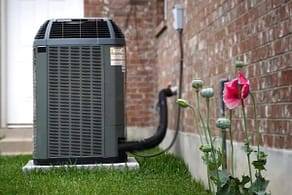
Get low prices by signing long-term contracts. Save an average of $800+ each year. Have warm interiors. Ductless mini-split types regulate room temperatures selectively. They don't waste energy heating little-used spaces. Heat pumps quickly pay for themselves.
2. Access Abundant Renewable Energy
Modern heat pumps use BC's renewable hydroelectric infrastructure to extract green energy. They don't rely on limited natural gas resources or carbon-intensive extraction processes. Switching to hydro-powered heating is sensible. It electrifies and decarbonizes homes. It also keeps money local instead of supporting dirty offshore fuel industries. Electricity rates remain stable despite the unpredictable fossil fuel prices influenced by global markets and political instability. Being self-sufficient feels good!
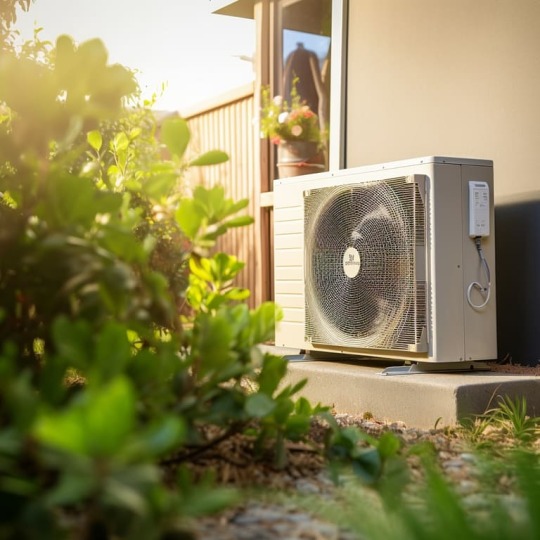
3. Cater Unique Home Heating Needs
Heat pumps now work in more types of homes, not just new ones. Slim wall mounts are innovations. They require zero ducting. They can heat smaller spaces and additions without forced-air capabilities.
Dwelling zones that need extra warmth or cooling can be satisfied at the same time using smart variable refrigerant handling. Compressors can be placed outdoors. Air handlers can be placed indoors. They are compact and flexible. Heat pump deals Vancouver can be located anywhere without major renovations. No home heating challenge exists now. Remedies are available from heat pump recommendations. Experts like Veteran Heating and Cooling can help.
4. Seamless Central Heating Integration
Homeowners can keep their existing furnaces as emergency backup heating. They can also integrate hybrid systems that combine the best of both technologies. Veteran HVAC experts suggest using heat pumps as the main source of heating most of the time.
When it gets really cold outside, the controls switch to gas furnaces or boilers to keep the inside warm. This combo is the best for homeowners. It ensures secure enjoyment of heating capabilities and savings in winter or summer. Why choose one solution when combining both is more reliable, comfortable, and affordable?
Wrapping Up
Heat pump deals in Vancouver are essential for households in the region. They provide reliable heating, energy savings, sustainability, and custom integration. Contact Veteran Heating and Cooling for free consultations. They can deliver your perfect energy-revitalizing solution.
0 notes
Video
tumblr
Ducted Split Hyper Heat Pump in Minisplitwarehouse.com
ductless split systems, systems ductless air, ductless systems air conditioning, ductless systems mini split, ductless systems heating cooling
Ducted Split Hyper Heat Pump in Minisplitwarehouse.com Ducted air systems are the most common type of central heating and cooling used. Get AirCon 36000 Btu 18 SEER Central Ducted Split Hyper Heat Pump AC. Price: $2,609.99 ex. tax. Call us 877-770-3548 or visit our website.
LINK: https://www.minisplitwarehouse.com/category/slim-ducted
2 notes
·
View notes
Video
tumblr
Pioneer 18,000 BTU 19 SEER Ceiling Concealed Ducted A/C Heat Pump
concealed duct mini split, slim duct mini split, ducted mini split system, 18000 btu ducted mini split, 18000 btu mini split square footage
Pioneer 18,000 BTU 19 SEER Ceiling Concealed Ducted A/C Heat Pump. Ducted Concealed mini split systems offer climate control for multiple rooms and areas, utilizing a network of air ducts. Price: $1,728.00. Contact us 305-767-0610.
Link: https://thebestminisplit.com/producto/pioneer-18000-btu-ducted/
1 note
·
View note
Text

48000 Btu Ducted Indoor Unit in Minisplitwarehouse.com
Get 48000 Btu DLFLA Ducted Indoor Unit.
FEATURES: Modes: Cool, Heat, Dry, Fan, Auto 4 Ton: 16.2 SEER/ 8.6 EER/10.8 HSPF/ COP: 47F (3.03), 17F (2.46), 5F (1.8) Multi Poise Installation (Up Flow, Down Flow, Horizontal Right, Horizontal Left) Total system static pressure up to 0.8 in. W.C Less than 2% air leakage Quiet indoor operation Anti-corrosive fin coating Extreme heating operation in as low as -22° F (-30° C) based on outdoor unit pairing Optional Electric Heat Packages available Built-in third-party thermostat compatibility (Single Stage): Not Included.
PRICE: $1,729.99 ex. tax
ducted mini split, "slim" ducted mini split, ducted mini split ac, ducted mini split air conditioner, ducted mini split heat pump, ducted heat pump, ducted ac, ducted air conditioner
midea mini split, midea mini split ac, midea mini split air conditioner, midea mini split heat pump, midea ductless mini split, midea ductless ac, midea ductless air conditioner, midea ductless heat pump
LINK: https://www.minisplitwarehouse.com/category/slim-ducted https://www.minisplitwarehouse.com/category/midea
2 notes
·
View notes
Text
Heat Pump vs Air Conditioner
Living in a state with a moderate or variable climate means having multiple options for how you want to tackle the seasonal changes in weather. Most commonly, you’ll find yourself debating over heat pumps and air conditioners.
Air conditioners are devices that absorb warm indoor air and supply cooler air instead. Heat pumps also perform the same operation, but in addition to cooling the indoor air, heat pumps can also supply hot air. On warmer days, you can use it as an air conditioner, and on cooler days, you can use them to heat the room.
If you’re planning to invest in an air conditioner or a heat pump, it is vital to consider factors such as the type of unit, unit size, energy efficiency, and cost. Continue reading this guide to learn how air conditioners and heat pumps work, the types available, and the benefits of each. Compare the costs associated with HVAC systems and find out which is best suited for your cooling or heating requirements.
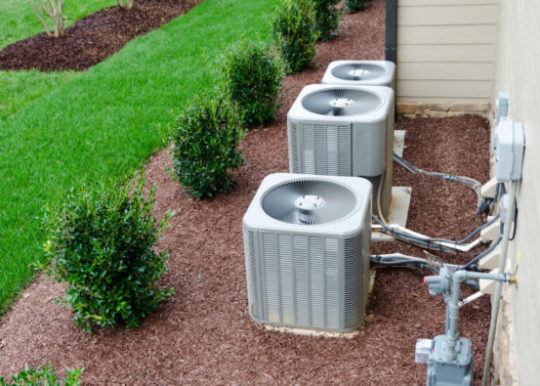
A SEER rating is a measure of your HVAC unit’s maximum possible efficiency. Image: Shutterstock/ Konstantin L.
Heat pumps
Heat pump costs and sizes may vary, but they all have the same working principle. Let’s find out more about an HVAC heat pump system.
What is a heat pump?
A heat pump is a device that transfers heat between the air inside a building space and the air outside. In a warmer climate, the unit extracts heat from the indoor air and transfers it to the outdoor air. During cooler days, this process reverses, and the unit absorbs heat from the outside air and delivers it indoors. The unit is efficient enough to extract heat from the outside air even during freezing temperatures. However, when there is no heat left to extract, an electric heater will heat the outside air to warm the indoors.
Types of heat pumps
Heat pumps are classified into two major types, air source heat pumps and geothermal heat pumps. An air-source heat pump utilizes heat from the outside air, while a geothermal heat pump extracts heat from the ground.
Depending on the design, heat pumps are generally available in two types, split type and packaged units. A split type heat pump consists of two separate outdoor and indoor units, while a packaged unit comes with all the components of the system housed in a single cabinet.
Sometimes, a packaged unit also includes electric heating coils or a gas furnace, which supplements the heat pump to deliver warm air indoors during frigid weather conditions.
Heat pump benefits
For moderate climates, heat pumps are generally more cost-effective and energy-efficient than other means of heating, such as oil or gas furnaces.
Apart from lowering energy consumption, these units are also safer and relatively environmentally-friendly.
Heat pumps can provide both cooling and heating, eliminating the need to have a separate system to fulfill heating requirements.
Modern heat pumps are also reliable and have a long lifespan of around 10-15 years.
Depending on the area you live in, buying an energy-efficient heat pump can also make you eligible for tax rebates.
Heat pumps require less maintenance compared to traditional heating and cooling systems like wood stoves or fireplaces.
Heat pump costs
The cost of a heat pump with installation depends on many factors, including the unit type, size of the unit, energy efficiency ratings, location where you need the heat pump installed, and the necessary amount of ductwork.The average price of a house heat pump with installation can vary from as low as $4,100 to as much as $20,000 for a geothermal unit installed.
The best way to get accurate details on pricing and guidance on selecting the right size heat pump for your home or office is to consult a local HVAC professional in your area.
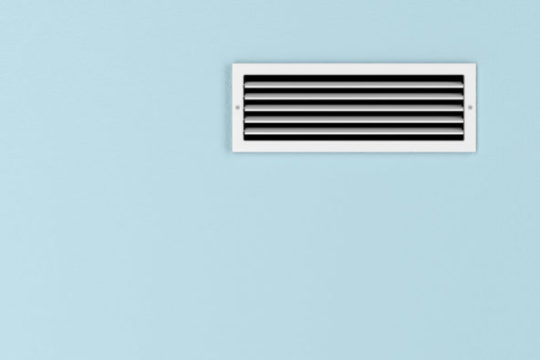
Your return grills, or the covers on your vents, could be to blame for your A/C issues. Image: Mile Atanasov/Shutterstock
Air Conditioners
Similar to a heat pump, an air conditioner is also available in different sizes and types, with different energy efficiencies. Let’s find how this HVAC system works in more detail.
What is an air conditioner?
Similar to a heat pump, an air conditioner performs the same job of transferring heat from one place to another, however, an air conditioner is only capable of cooling. This means that it extracts heat from the indoor air and transfers the heat outside.
The components used in this device are also similar to a heat pump which consists of an outdoor unit housing a condenser, compressor, and fan. The indoor unit includes an evaporator and a fan. A refrigerant circulates through the condenser and evaporator, absorbing heat from indoor air. The resulting cold air moves through the ducts using the fan and cools the indoors.
Types of air conditioners
Air conditioners are available in different types, including central air conditioners, split-type air conditioners, window air conditioners, and portable units. Despite their various configurations, the working principle remains the same.
A central air conditioner packs evaporator, condenser, and compressor in a single unit and is often placed on a roof. The unit is connected with the supply and return ducts installed along the walls of a home or office.
Split-type air conditioners have two separate outdoor and indoor units, and the air supply is through the ducts. There are also mini-split air conditioners that have a smaller footprint and do not require ductwork for air supply. The cold air blows through a slim indoor unit mounted on the wall.
A wall unit also combines all the components in a single box that can fit on a window. This type of air conditioner is ideal for cooling a single room. A portable air conditioner is similar to a window unit but can be easily moved from room to room.
Air conditioner benefits
Air conditioners offer optimum climate indoors, providing a comfortable environment even during the warmest days.
AC can encourage better sleep as the room temperature remains steady and at comfortable levels.
An air conditioner can help to improve indoor air quality by reducing allergens and pollutants.
Properly air-conditioned rooms can reduce dehydration
Air conditioner costs
The cost of an air conditioner can vary from $150 to $10,000 depending on the type, energy efficiency ratings, and the unit size you choose. You’ll also need to include installation cost, which can range from $1,000 to $6,000 and is dependent on factors such as unit size, the location where you need the AC installed, and the amount of ductwork that goes into setting up the system. Buying a more energy-efficient model can also save money in energy costs over time.
For accurate air conditioner pricing, consult an HVAC professional in your area.
The post Heat Pump vs Air Conditioner appeared first on Freshome.com.
0 notes
Text
Heat Pump vs Air Conditioner
Living in a state with a moderate or variable climate means having multiple options for how you want to tackle the seasonal changes in weather. Most commonly, you’ll find yourself debating over heat pumps and air conditioners.
Air conditioners are devices that absorb warm indoor air and supply cooler air instead. Heat pumps also perform the same operation, but in addition to cooling the indoor air, heat pumps can also supply hot air. On warmer days, you can use it as an air conditioner, and on cooler days, you can use them to heat the room.
If you’re planning to invest in an air conditioner or a heat pump, it is vital to consider factors such as the type of unit, unit size, energy efficiency, and cost. Continue reading this guide to learn how air conditioners and heat pumps work, the types available, and the benefits of each. Compare the costs associated with HVAC systems and find out which is best suited for your cooling or heating requirements.
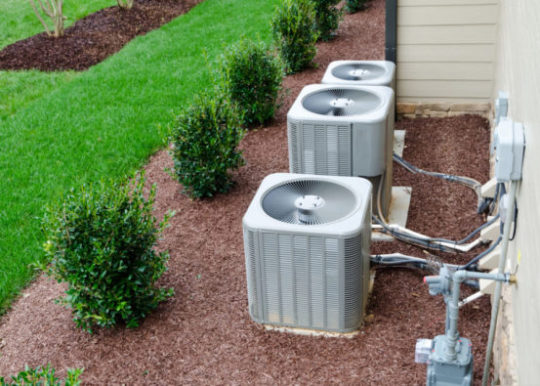
A SEER rating is a measure of your HVAC unit’s maximum possible efficiency. Image: Shutterstock/ Konstantin L.
Heat pumps
Heat pump costs and sizes may vary, but they all have the same working principle. Let’s find out more about an HVAC heat pump system.
What is a heat pump?
A heat pump is a device that transfers heat between the air inside a building space and the air outside. In a warmer climate, the unit extracts heat from the indoor air and transfers it to the outdoor air. During cooler days, this process reverses, and the unit absorbs heat from the outside air and delivers it indoors. The unit is efficient enough to extract heat from the outside air even during freezing temperatures. However, when there is no heat left to extract, an electric heater will heat the outside air to warm the indoors.
Types of heat pumps
Heat pumps are classified into two major types, air source heat pumps and geothermal heat pumps. An air-source heat pump utilizes heat from the outside air, while a geothermal heat pump extracts heat from the ground.
Depending on the design, heat pumps are generally available in two types, split type and packaged units. A split type heat pump consists of two separate outdoor and indoor units, while a packaged unit comes with all the components of the system housed in a single cabinet.
Sometimes, a packaged unit also includes electric heating coils or a gas furnace, which supplements the heat pump to deliver warm air indoors during frigid weather conditions.
Heat pump benefits
For moderate climates, heat pumps are generally more cost-effective and energy-efficient than other means of heating, such as oil or gas furnaces.
Apart from lowering energy consumption, these units are also safer and relatively environmentally-friendly.
Heat pumps can provide both cooling and heating, eliminating the need to have a separate system to fulfill heating requirements.
Modern heat pumps are also reliable and have a long lifespan of around 10-15 years.
Depending on the area you live in, buying an energy-efficient heat pump can also make you eligible for tax rebates.
Heat pumps require less maintenance compared to traditional heating and cooling systems like wood stoves or fireplaces.
Heat pump costs
The cost of a heat pump with installation depends on many factors, including the unit type, size of the unit, energy efficiency ratings, location where you need the heat pump installed, and the necessary amount of ductwork.The average price of a house heat pump with installation can vary from as low as $4,100 to as much as $20,000 for a geothermal unit installed.
The best way to get accurate details on pricing and guidance on selecting the right size heat pump for your home or office is to consult a local HVAC professional in your area.
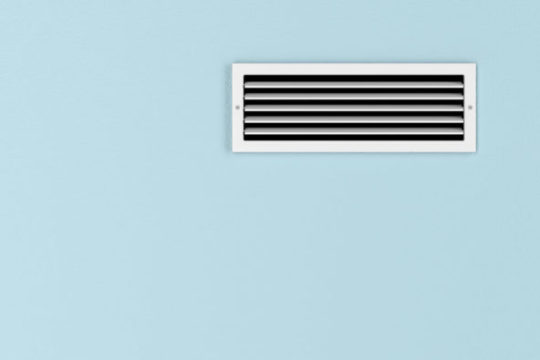
Your return grills, or the covers on your vents, could be to blame for your A/C issues. Image: Mile Atanasov/Shutterstock
Air Conditioners
Similar to a heat pump, an air conditioner is also available in different sizes and types, with different energy efficiencies. Let’s find how this HVAC system works in more detail.
What is an air conditioner?
Similar to a heat pump, an air conditioner performs the same job of transferring heat from one place to another, however, an air conditioner is only capable of cooling. This means that it extracts heat from the indoor air and transfers the heat outside.
The components used in this device are also similar to a heat pump which consists of an outdoor unit housing a condenser, compressor, and fan. The indoor unit includes an evaporator and a fan. A refrigerant circulates through the condenser and evaporator, absorbing heat from indoor air. The resulting cold air moves through the ducts using the fan and cools the indoors.
Types of air conditioners
Air conditioners are available in different types, including central air conditioners, split-type air conditioners, window air conditioners, and portable units. Despite their various configurations, the working principle remains the same.
A central air conditioner packs evaporator, condenser, and compressor in a single unit and is often placed on a roof. The unit is connected with the supply and return ducts installed along the walls of a home or office.
Split-type air conditioners have two separate outdoor and indoor units, and the air supply is through the ducts. There are also mini-split air conditioners that have a smaller footprint and do not require ductwork for air supply. The cold air blows through a slim indoor unit mounted on the wall.
A wall unit also combines all the components in a single box that can fit on a window. This type of air conditioner is ideal for cooling a single room. A portable air conditioner is similar to a window unit but can be easily moved from room to room.
Air conditioner benefits
Air conditioners offer optimum climate indoors, providing a comfortable environment even during the warmest days.
AC can encourage better sleep as the room temperature remains steady and at comfortable levels.
An air conditioner can help to improve indoor air quality by reducing allergens and pollutants.
Properly air-conditioned rooms can reduce dehydration
Air conditioner costs
The cost of an air conditioner can vary from $150 to $10,000 depending on the type, energy efficiency ratings, and the unit size you choose. You’ll also need to include installation cost, which can range from $1,000 to $6,000 and is dependent on factors such as unit size, the location where you need the AC installed, and the amount of ductwork that goes into setting up the system. Buying a more energy-efficient model can also save money in energy costs over time.
For accurate air conditioner pricing, consult an HVAC professional in your area.
The post Heat Pump vs Air Conditioner appeared first on Freshome.com.
0 notes
Photo
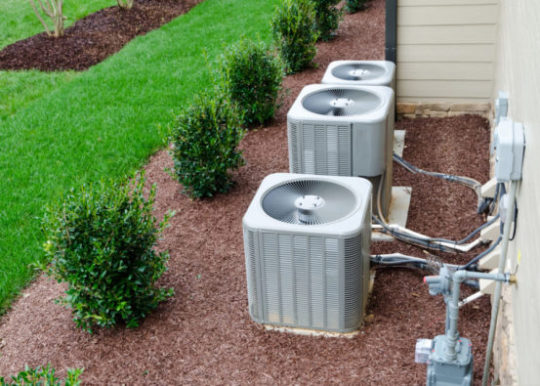
Heat Pump vs Air Conditioner https://ift.tt/2Hz7YMR
Living in a state with a moderate or variable climate means having multiple options for how you want to tackle the seasonal changes in weather. Most commonly, you’ll find yourself debating over heat pumps and air conditioners.
Air conditioners are devices that absorb warm indoor air and supply cooler air instead. Heat pumps also perform the same operation, but in addition to cooling the indoor air, heat pumps can also supply hot air. On warmer days, you can use it as an air conditioner, and on cooler days, you can use them to heat the room.
If you’re planning to invest in an air conditioner or a heat pump, it is vital to consider factors such as the type of unit, unit size, energy efficiency, and cost. Continue reading this guide to learn how air conditioners and heat pumps work, the types available, and the benefits of each. Compare the costs associated with HVAC systems and find out which is best suited for your cooling or heating requirements.

A SEER rating is a measure of your HVAC unit’s maximum possible efficiency. Image: Shutterstock/ Konstantin L.
Heat pumps
Heat pump costs and sizes may vary, but they all have the same working principle. Let’s find out more about an HVAC heat pump system.
What is a heat pump?
A heat pump is a device that transfers heat between the air inside a building space and the air outside. In a warmer climate, the unit extracts heat from the indoor air and transfers it to the outdoor air. During cooler days, this process reverses, and the unit absorbs heat from the outside air and delivers it indoors. The unit is efficient enough to extract heat from the outside air even during freezing temperatures. However, when there is no heat left to extract, an electric heater will heat the outside air to warm the indoors.
Types of heat pumps
Heat pumps are classified into two major types, air source heat pumps and geothermal heat pumps. An air-source heat pump utilizes heat from the outside air, while a geothermal heat pump extracts heat from the ground.
Depending on the design, heat pumps are generally available in two types, split type and packaged units. A split type heat pump consists of two separate outdoor and indoor units, while a packaged unit comes with all the components of the system housed in a single cabinet.
Sometimes, a packaged unit also includes electric heating coils or a gas furnace, which supplements the heat pump to deliver warm air indoors during frigid weather conditions.
Heat pump benefits
For moderate climates, heat pumps are generally more cost-effective and energy-efficient than other means of heating, such as oil or gas furnaces.
Apart from lowering energy consumption, these units are also safer and relatively environmentally-friendly.
Heat pumps can provide both cooling and heating, eliminating the need to have a separate system to fulfill heating requirements.
Modern heat pumps are also reliable and have a long lifespan of around 10-15 years.
Depending on the area you live in, buying an energy-efficient heat pump can also make you eligible for tax rebates.
Heat pumps require less maintenance compared to traditional heating and cooling systems like wood stoves or fireplaces.
Heat pump costs
The cost of a heat pump with installation depends on many factors, including the unit type, size of the unit, energy efficiency ratings, location where you need the heat pump installed, and the necessary amount of ductwork.The average price of a house heat pump with installation can vary from as low as $4,100 to as much as $20,000 for a geothermal unit installed.
The best way to get accurate details on pricing and guidance on selecting the right size heat pump for your home or office is to consult a local HVAC professional in your area.

Your return grills, or the covers on your vents, could be to blame for your A/C issues. Image: Mile Atanasov/Shutterstock
Air Conditioners
Similar to a heat pump, an air conditioner is also available in different sizes and types, with different energy efficiencies. Let’s find how this HVAC system works in more detail.
What is an air conditioner?
Similar to a heat pump, an air conditioner performs the same job of transferring heat from one place to another, however, an air conditioner is only capable of cooling. This means that it extracts heat from the indoor air and transfers the heat outside.
The components used in this device are also similar to a heat pump which consists of an outdoor unit housing a condenser, compressor, and fan. The indoor unit includes an evaporator and a fan. A refrigerant circulates through the condenser and evaporator, absorbing heat from indoor air. The resulting cold air moves through the ducts using the fan and cools the indoors.
Types of air conditioners
Air conditioners are available in different types, including central air conditioners, split-type air conditioners, window air conditioners, and portable units. Despite their various configurations, the working principle remains the same.
A central air conditioner packs evaporator, condenser, and compressor in a single unit and is often placed on a roof. The unit is connected with the supply and return ducts installed along the walls of a home or office.
Split-type air conditioners have two separate outdoor and indoor units, and the air supply is through the ducts. There are also mini-split air conditioners that have a smaller footprint and do not require ductwork for air supply. The cold air blows through a slim indoor unit mounted on the wall.
A wall unit also combines all the components in a single box that can fit on a window. This type of air conditioner is ideal for cooling a single room. A portable air conditioner is similar to a window unit but can be easily moved from room to room.
Air conditioner benefits
Air conditioners offer optimum climate indoors, providing a comfortable environment even during the warmest days.
AC can encourage better sleep as the room temperature remains steady and at comfortable levels.
An air conditioner can help to improve indoor air quality by reducing allergens and pollutants.
Properly air-conditioned rooms can reduce dehydration
Air conditioner costs
The cost of an air conditioner can vary from $150 to $10,000 depending on the type, energy efficiency ratings, and the unit size you choose. You’ll also need to include installation cost, which can range from $1,000 to $6,000 and is dependent on factors such as unit size, the location where you need the AC installed, and the amount of ductwork that goes into setting up the system. Buying a more energy-efficient model can also save money in energy costs over time.
For accurate air conditioner pricing, consult an HVAC professional in your area.
The post Heat Pump vs Air Conditioner appeared first on Freshome.com.
Freshome Team
0 notes
Text
Heat Pump vs Air Conditioner
Living in a state with a moderate or variable climate means having multiple options for how you want to tackle the seasonal changes in weather. Most commonly, you’ll find yourself debating over heat pumps and air conditioners.
Air conditioners are devices that absorb warm indoor air and supply cooler air instead. Heat pumps also perform the same operation, but in addition to cooling the indoor air, heat pumps can also supply hot air. On warmer days, you can use it as an air conditioner, and on cooler days, you can use them to heat the room.
If you’re planning to invest in an air conditioner or a heat pump, it is vital to consider factors such as the type of unit, unit size, energy efficiency, and cost. Continue reading this guide to learn how air conditioners and heat pumps work, the types available, and the benefits of each. Compare the costs associated with HVAC systems and find out which is best suited for your cooling or heating requirements.
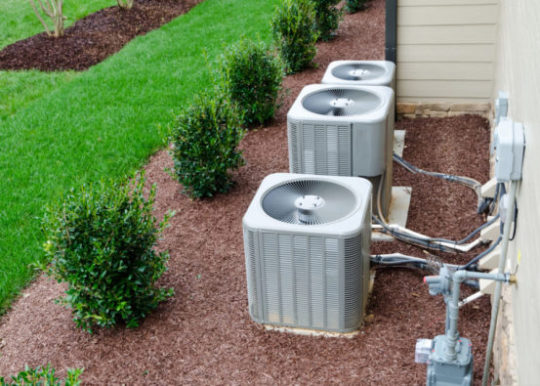
A SEER rating is a measure of your HVAC unit’s maximum possible efficiency. Image: Shutterstock/ Konstantin L.
Heat pumps
Heat pump costs and sizes may vary, but they all have the same working principle. Let’s find out more about an HVAC heat pump system.
What is a heat pump?
A heat pump is a device that transfers heat between the air inside a building space and the air outside. In a warmer climate, the unit extracts heat from the indoor air and transfers it to the outdoor air. During cooler days, this process reverses, and the unit absorbs heat from the outside air and delivers it indoors. The unit is efficient enough to extract heat from the outside air even during freezing temperatures. However, when there is no heat left to extract, an electric heater will heat the outside air to warm the indoors.
Types of heat pumps
Heat pumps are classified into two major types, air source heat pumps and geothermal heat pumps. An air-source heat pump utilizes heat from the outside air, while a geothermal heat pump extracts heat from the ground.
Depending on the design, heat pumps are generally available in two types, split type and packaged units. A split type heat pump consists of two separate outdoor and indoor units, while a packaged unit comes with all the components of the system housed in a single cabinet.
Sometimes, a packaged unit also includes electric heating coils or a gas furnace, which supplements the heat pump to deliver warm air indoors during frigid weather conditions.
Heat pump benefits
For moderate climates, heat pumps are generally more cost-effective and energy-efficient than other means of heating, such as oil or gas furnaces.
Apart from lowering energy consumption, these units are also safer and relatively environmentally-friendly.
Heat pumps can provide both cooling and heating, eliminating the need to have a separate system to fulfill heating requirements.
Modern heat pumps are also reliable and have a long lifespan of around 10-15 years.
Depending on the area you live in, buying an energy-efficient heat pump can also make you eligible for tax rebates.
Heat pumps require less maintenance compared to traditional heating and cooling systems like wood stoves or fireplaces.
Heat pump costs
The cost of a heat pump with installation depends on many factors, including the unit type, size of the unit, energy efficiency ratings, location where you need the heat pump installed, and the necessary amount of ductwork.The average price of a house heat pump with installation can vary from as low as $4,100 to as much as $20,000 for a geothermal unit installed.
The best way to get accurate details on pricing and guidance on selecting the right size heat pump for your home or office is to consult a local HVAC professional in your area.
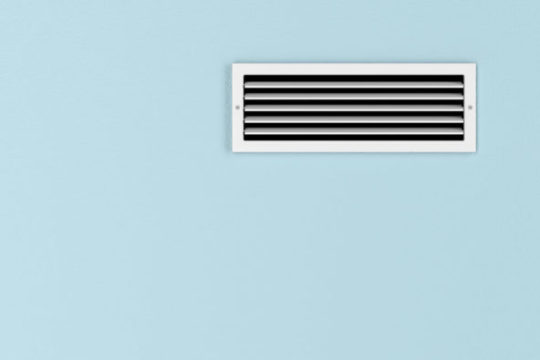
Your return grills, or the covers on your vents, could be to blame for your A/C issues. Image: Mile Atanasov/Shutterstock
Air Conditioners
Similar to a heat pump, an air conditioner is also available in different sizes and types, with different energy efficiencies. Let’s find how this HVAC system works in more detail.
What is an air conditioner?
Similar to a heat pump, an air conditioner performs the same job of transferring heat from one place to another, however, an air conditioner is only capable of cooling. This means that it extracts heat from the indoor air and transfers the heat outside.
The components used in this device are also similar to a heat pump which consists of an outdoor unit housing a condenser, compressor, and fan. The indoor unit includes an evaporator and a fan. A refrigerant circulates through the condenser and evaporator, absorbing heat from indoor air. The resulting cold air moves through the ducts using the fan and cools the indoors.
Types of air conditioners
Air conditioners are available in different types, including central air conditioners, split-type air conditioners, window air conditioners, and portable units. Despite their various configurations, the working principle remains the same.
A central air conditioner packs evaporator, condenser, and compressor in a single unit and is often placed on a roof. The unit is connected with the supply and return ducts installed along the walls of a home or office.
Split-type air conditioners have two separate outdoor and indoor units, and the air supply is through the ducts. There are also mini-split air conditioners that have a smaller footprint and do not require ductwork for air supply. The cold air blows through a slim indoor unit mounted on the wall.
A wall unit also combines all the components in a single box that can fit on a window. This type of air conditioner is ideal for cooling a single room. A portable air conditioner is similar to a window unit but can be easily moved from room to room.
Air conditioner benefits
Air conditioners offer optimum climate indoors, providing a comfortable environment even during the warmest days.
AC can encourage better sleep as the room temperature remains steady and at comfortable levels.
An air conditioner can help to improve indoor air quality by reducing allergens and pollutants.
Properly air-conditioned rooms can reduce dehydration
Air conditioner costs
The cost of an air conditioner can vary from $150 to $10,000 depending on the type, energy efficiency ratings, and the unit size you choose. You’ll also need to include installation cost, which can range from $1,000 to $6,000 and is dependent on factors such as unit size, the location where you need the AC installed, and the amount of ductwork that goes into setting up the system. Buying a more energy-efficient model can also save money in energy costs over time.
For accurate air conditioner pricing, consult an HVAC professional in your area.
The post Heat Pump vs Air Conditioner appeared first on Freshome.com.
from https://freshome.com/heating-and-cooling/heat-pump-vs-air-conditioner/ via Heat Pump vs Air Conditioner
0 notes
Text
Ductless Condensate Pumps: What You Need To Know
In the simplest terms, condensation is vapor converted into liquid. A simple example to understand this is the droplets of water that form on a cold can of soda when you’re outside in the summer. The humid air outside is cooled beyond its dew point, hence the droplets.
To remove humidity from inside your home, consider investing in a mini-split. It is a cooling solution and results in drier indoor air for extra cooling. It also helps to evaporate any moisture on your skin, which will help to cool down your body. In this article, we discuss what you need to know about the ductless condensate pump.
Learn More About Ductless HVAC Systems Call To Schedule A Free, In-Home Estimate
Is Condensate Dangerous?
If it is not properly dealt with, condensation in your home can lead to lots of issues. Water droplets can pool up, and cause damage to your floors, ceiling, walls, and possibly other things. Condensation can result in mold growth. This is very harmful to your home as well as your health. It can cause respiratory illnesses or skin allergies.
It is necessary that condensation is drained properly from your home. If you don’t do this it can damage your property and even your family’s health. Condensation damages can cost up to a few thousand dollars.
Call Today: (610) 377-1098
How Do Mini-Splits Remove Condensate?
There are different ways mini-split systems remove condensate. Some systems need pumps while others utilize a gravity-drain tube. The list below goes through the common ways mini-splits work.
Pipe Runs
Typically, wall-mounted and floor units do not have condensate pumps. Alternatively, these types of units use gravity to drain the water. This requires the drain line to be tilted downwards.
To make sure the moisture is removed properly, run the drain line through a hole that is one-fourth to one-half inches higher than it is outside. This will ensure the line is angled down.
Drain Tubes
The most common way wall and floor-mounted units remove condensation is with a drain tube that has a 5/8″ inner diameter vinyl tubing.
Make sure the tube does not get kinked. If it does, the water will not drain properly. There’s a chance condensate could damage the indoor air handler if it overflows. To avoid this problem, use a braided tube that has less of a chance of becoming kinked.
Explore Our Ductless HVAC System Services Call To Schedule A Free Consultation
Pumps
In some instances, gravity drainage is not possible. Instead, a condensate pump needs to be used. They are made up of a 1” or 1 to 1/4″ PVC rather than the usual tubing. Because of this the pump can keep a slope throughout the horizontal run.
To make things simpler, you can connect multiple indoor air handlers to one drain line. Before you do this, talk to a professional technician and look at the manufacturer’s guidelines. You’ll need to ensure that the single line can handle all the water from each indoor unit.
Ceiling suspended, ceiling cassette and concealed ducted units often have built-in lift pumps. On the other hand, floor and wall-mounted units are typically mounted on a wall so they can drain any condensate without needing a pump. A ground-level unit needs a condensate pump to drain water.
youtube
What Are The Basic Components Of A Ductless Condensate Pump?
Condensate pumps usually consist of two important parts, the float switch and the reservoir. The indoor unit’s drain pan is connected to the reservoir. The collected water goes there while the mini-split unit is cooling.
The built-in float switch turns on the condensate pump once the condensate gets to a certain level. If the condensate pump is not operating properly, the float acts as a warning bell. The switch keeps the condensate from overflowing by turning off the indoor air handler.
Types Of Condensate Pumps
All condensate pumps were created to remove condensate, but there are some different types to pick from. You should learn about each option and its benefits to determine which condensate pump is best for you.
The different options of condensate pumps are:
Standard
The standard style of a condensate pump is compact and discreet. Its reservoir is located inside the indoor air handler. This hides it behind a ceiling or wall so it’s out of sight. It will work well with all other applications since it has a standard plug.
Low Profile
If you want a small condensate pump, a low profile one will be your best choice. It’s less intrusive than the standard one and will be hidden completely away. It’s a very slim and inconspicuous pump.
Call To Schedule A Free, In-Home Estimate
Surface Mounted
Surface-mounted condensate pumps are installed right under your mini-split system. The pump and reservoir are located in a small box outside of the unit. Because of its accessible location, surface mounted pumps are easy to clean and repair. If you need easy access to the reservoir, then a surface mounted condensate pump is a great choice.
High Suction
The only difference between a high suction condensate pump and a standard one is that the high suction one has extra suction power which allows it to lift condensate further and higher. This pump is ideal if your indoor unit is below ground level. In this setup, water needs to be moved higher before it can drain outside. There will also be less noise because these pumps are installed away from your living space.
Four Common Condensate Installation Mistakes
Installing mini-split condensate pumps can be a bit challenging. If you don’t have the proper tools, experience, and knowledge, you can harm the equipment’s functionality. Some common errors include:
Pump Omission
Some mini-split systems do not have a condensate pan since the water is drained by gravity. But in some situations, gravity draining is not possible and a condensate pump is necessary so there is no overflow.
Siphoning
Siphons are commonly routed incorrectly which causes an airlock and overflow or damage to the pump. It may not drain correctly and the condensate can overflow.
Some condensate pumps come with anti-siphoning devices for free. Anti-siphoning devices are made of plastic that is two-inches long and prevents the pump from auto-siphoning. It is able to be installed either vertically or horizontally.
Learn More About How Ductless Works Call To Make An Appointment
Pump Selection
The easiest mistake to make is picking the wrong pump. The wrong pump can cause issues like loud noise, poor performance, and the ease of installation.
For example, choosing a large wall-mounted pump is likely not necessary for a mini-split unit. They are also very noisy and not aesthetically pleasing.
Wiring
Condensate pumps use line-voltage power that is connected to the unit’s electrical terminal. There are different pump wiring requirements for each mini-split unit. Not one diagram can show all of the mini-split makes and models. So wiring incorrectly is a common error.
Do I Need Professional Ductless Installation?
If you have any questions or concerns about which condensate pump is right for you and your home, contact a professional. They will be happy to explain your options and properly install your system.
Professional installation will guarantee you get the most out of your mini-split, and it will make sure all parts of it, like the condensate pump, will work correctly for a long time. In addition, professional installation ensures that the factory warranty will remain intact.
Check Out One Of Our Ductless Installation Projects
Ductless Panels Add Heat And AC In An Addition To A Catasauqua PA Home
Call R.F. Ohl To Learn More About Ductless Heating & Cooling Systems
If you want to discover what a ductless HVAC system can do for you, call R.F. Ohl. Our NATE-certified technicians will help you determine the type of HVAC system that works best for your needs.
R.F. Ohl is one of the region’s leading full-service HVAC companies. We offer a wide range of HVAC services, from installations and tune-ups to repairs and consultations. We can help you find different approaches and solutions to ensure that our services meet your requirements and budget. Call us today for a free, in-home estimate.
Call Now: (610) 377-1098 Explore Our Case Studies
Click here to contact us today or give us a call at (610) 377-1098 if you have any questions.
The post Ductless Condensate Pumps: What You Need To Know appeared first on R.F. Ohl.
0 notes
Video
tumblr
24k BTU 18 SEER Slim Ducted Mini Split Heat Pump AC in Minisplitwarehouse.com
mini split heat and air conditioner, , mini split heat pump, mitsubishi ductless air conditioner, 18,000 btu mini split air conditioner with heat pump, best ductless air conditioner, ductless air conditioner, installation, ductless air conditioner reviews, best mini split ac, ductless heat pump
24k BTU 18 SEER Slim Ducted Mini Split Heat Pump AC in Minisplitwarehouse.com. Lowest price on best Mini Split units. Free shipping! Get AirCon 24000 BTU 18 SEER Slim Ducted Mini Split Heat Pump AC. Price: $1,898.99 ex. tax. Call us 877-770-3548 or visit our website.
Link: https://www.minisplitwarehouse.com/category/air-con
1 note
·
View note
Text
Life After Mitsubishi Condensing Unit Installation Manual
Understanding Mitsubishi Condensing Unit Installation Manual
There are many different kinds of indoor unit. The indoor unit is going to be installed high on an interior wall or in the ceiling, based on the fashion of fan coil that’s chosen. Ducted indoor units are typically not called cassettes.
Ductless systems may be used to control the temperature of one room, improving comfort and reducing energy expenses. Mitsubishi ductless systems give personalized comfort when conserving electricity and promoting environmental sustainability. Mitsubishi ductless split techniques offer exceptional versatility designed to satisfy the heating and cooling demands of a single room or a whole home.
Once a conventional system is operating, it runs in its highest speed, consuming the most sum of energy as a way to create the most of cooling or heating to keep the desired temperature. There are several kinds of systems that require various diagrams. It’s simple to comprehend why Mitsubishi ductless mini split systems are the fastest growing sector of the American air-conditioning industry. Mitsubishi Electric Mr. Slim systems are the ideal solution for just about any cooling or heating situation.
Indoor units are offered in half ton increments up to two ton capacities. It must be purchased separately. When the indoor unit is made for ceiling installation, it’s sometimes referred to as a cassette. There are many kinds of ducted indoor units.
Choose a location where the unit can be serviced easily and is sufficiently strong to support the weight. For that reason, it’s always best to slightly undersize the unit to permit it to operate for protracted amounts of time. The wall-mounted ductless units and ceiling cassettes don’t have any static pressure to fret about.
from Cozy Heat http://cozyheat.net/life-after-mitsubishi-condensing-unit-installation-manual/
0 notes